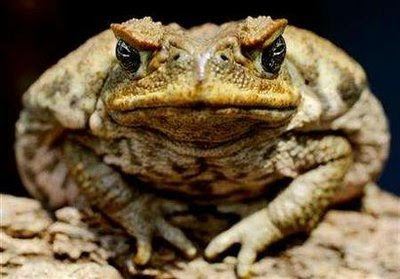I've got loads of spiders to unleash, so prepare for an Arachno-gala. Do whatever you need to do (get the shower water hot, curl your toes and tuck your feet underneath you, whatever), and enjoy.
Let me begin with
Judy's eight-legged friend in Wisconsin, US. This webslinger alternates between her leafy abode by the porch and her web. You have more restraint than I, Judy. No arachnid is allowed to take up residence near my porch for more than a day (except for jumping spiders, they get a pass). They get relocated.


Mara encountered this beauty in Akita, Japan. It was so large that she and her friends nicknamed it Gojira (that's Godzilla to us English-speaking gargantuan monster movie fans). See how international this post is? We're reaching across the globe, people.

Poor Carrie's tale follows, in which she lived out a nightmare of mine. She and her husband, Dan, were sitting in the garage, taking a break after a long day of construction, when Dan thinks he spots a mouse on the floor. But, low and behold, it wasn't a mouse. It was a mommy wolf spider, complete with spiderlings on her back. Carrie begins gacking and scrambles into the doorway as Dan spends the next 10 minutes taking pictures of the beast.

But Carrie's story doesn't end there. Dan turned around and spotted this next spider lurking in the doorway directly above where Carrie was watching on in horror at the wolfspider. Carrie's husband now runs interference for her whenever they enter the garage.

This last spider lives on the banks of
Hyony's pond. Hyony doesn't know what kind of spider it is, and would like to know what it might be. The abdomen is currently around 1cm long. Anyone want to take a stab at it (not literally, like me).



















































